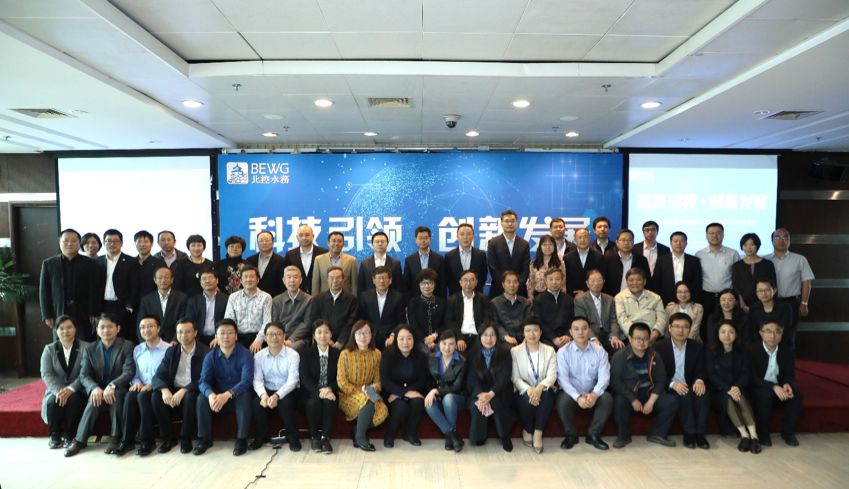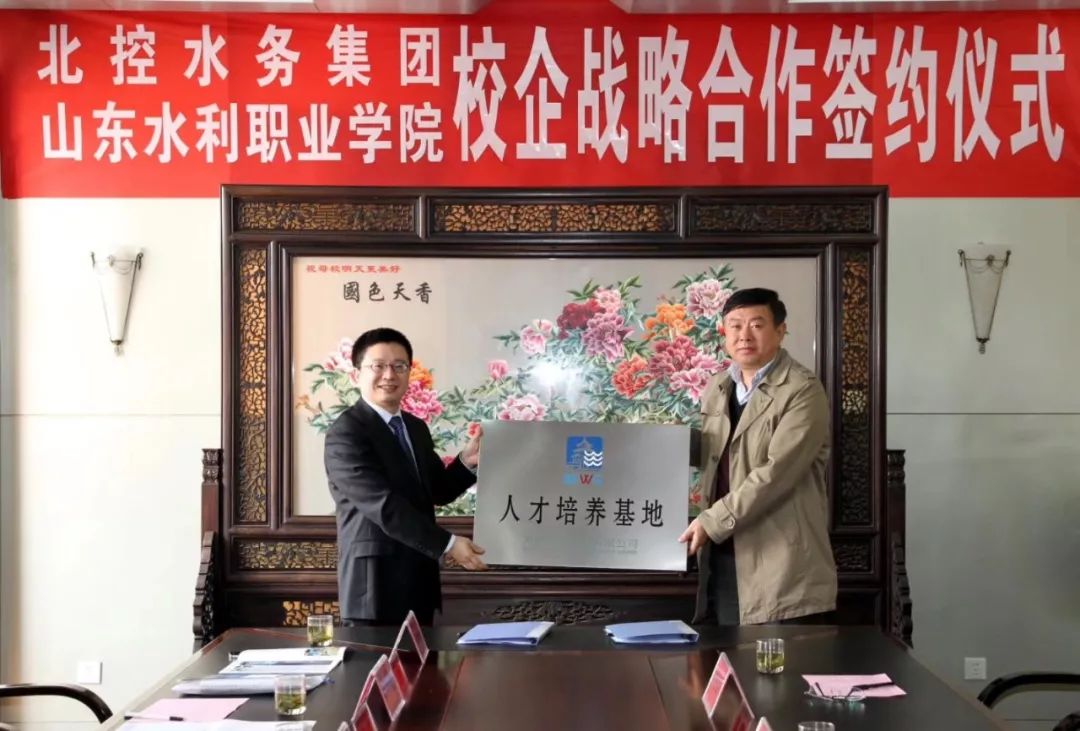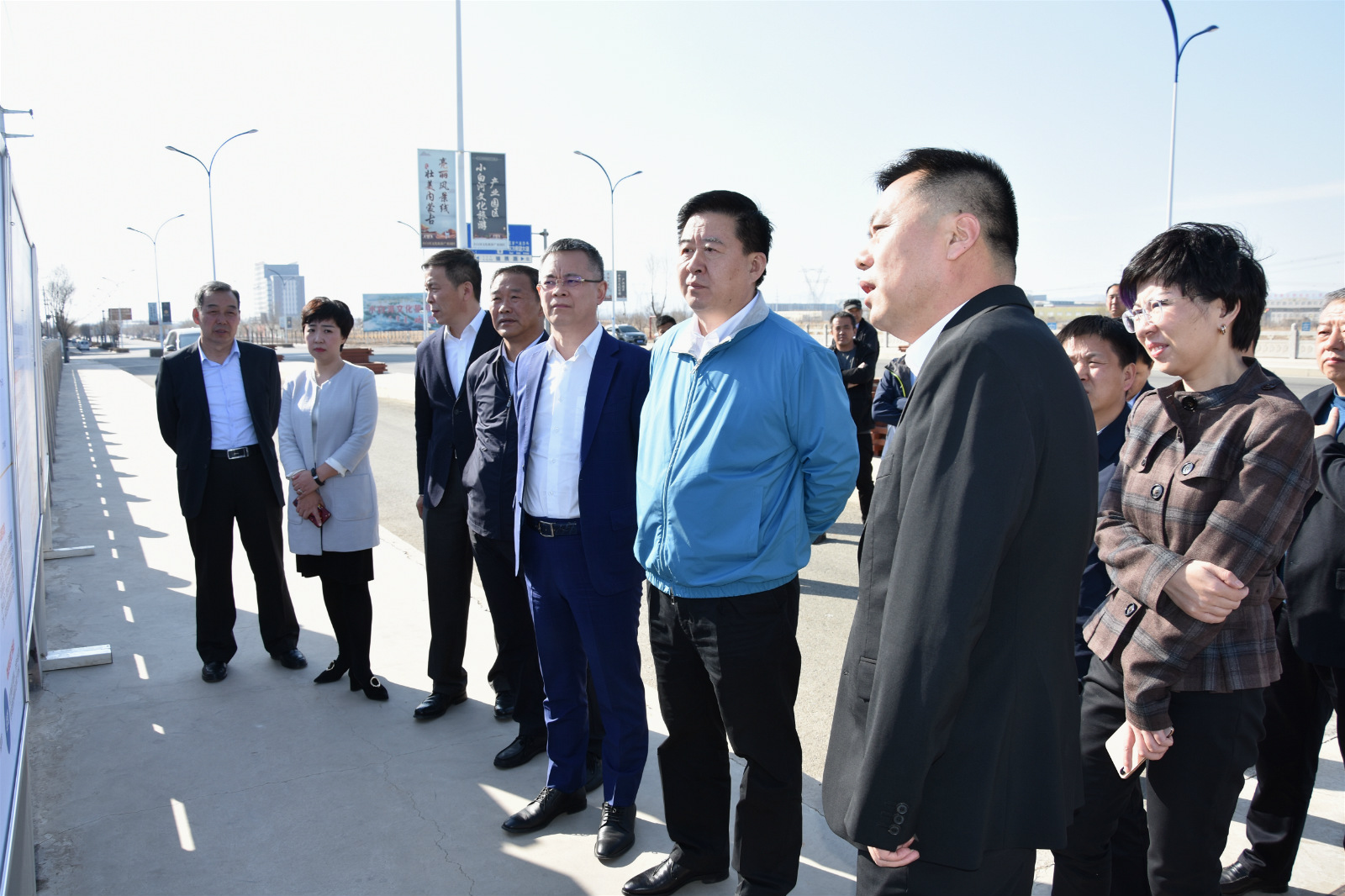Linking the “Belt and Road” BEWG Creates China’s Green Brand 2019-04-26
作为中国知名的环保企业,北控水务近年来在“一带一路”沿线国家斩获颇丰,马来西亚吉隆坡潘岱II污水处理厂、新加坡樟宜II新生水厂、收购威立雅葡萄牙水务资产,北控水务用实力交出了一张张满意的答卷。“一带一路”上,企业收获的不仅是硬实力的项目,还播种了沿线国家人民对中国企业的信任,这种文化上软实力的提升和共赢才是大国企业的担当。
As a well-known environmental protection company in China, in recent years, BEWG has achieved great success in the countries along the “Belt and Road”. With Kuala Lumpur Pantai II Sewage Treatment Plant in Malaysia, Changi II New Water Plant in Singapore, and the acquisition of Portuguese water assets of Veolia, BEWG has made satisfactory achievements with its strength. On the “Belt and Road”, companies have gained more than hard power projects, but also sowed the trust of the people of the countries along the route in Chinese companies. This kind of improvement and win-win situation in cultural soft power are truly the responsibility of large enterprises.
困难一个接着一个
Difficulties come one after another
海外环保项目的落地难度往往超乎国内从业者的想象。企业不仅要有走出去的勇气和魄力,更要有技术、施工、金融等综合实力。北控水务在马来西亚潘岱II污水处理厂项目中就经受了严峻考验。
The difficulty of implementation of overseas environmental protection projects is often beyond the imagination of domestic practitioners. Enterprises must not only have the courage to go out, but also have comprehensive strengths in technology, construction, and finance. BEWG has withstood a severe test in the Pantai II Sewage Treatment Plant in Malaysia.
地质条件复杂,施工条件恶劣。潘岱II污水处理厂所在地原是一个旧矿场,采矿结束后当地对土地进行回填,建立了最简单的污水处理设施氧化塘,氧化塘不仅影响环境而且污水处理不干净,就这样运行了20余年。
Complex geological conditions and harsh construction conditions. The site of Pantai II Sewage Treatment Plant was originally an old mine, the land was backfilled locally after mining, and the simplest sewage treatment facility—an oxidation pond was established, which not only affects the environment, but also has unclean treated sewage. However, it has been in operation for more than 20 years.
首先,原污水处理厂的基本资料匮乏就是一大难点。北控水务马来西亚项目负责人坦言,刚接手项目时,业主移交给北控水务的仅仅是一个氧化塘,且缺乏原污水处理厂的基本信息资料,这对企业的挑战十分巨大。
Firstly, the lack of basic information of the original sewage treatment plant is a major difficulty. The head of the Malaysia project of BEWG admitted that when the project was first taken over, the owner handed over only an oxidation pond to BEWG, and it lacks the basic information on the original sewage treatment plant, which is a huge challenge for the enterprise.
同时,标准不同也是一大障碍。在马来西亚的英国标准体系下,面对全新的监管程序、监管体系、技术标准,整个项目的工作步骤也产生了巨大的变化。而且,按照马来西亚法律,在建设新污水处理厂的过程中,要兼顾处理原厂污水处理达标,这在技术上也是一个难点。
Meanwhile, different standards are also another obstacle. Under the British Standards System in Malaysia, the work steps of the entire project have also undergone tremendous changes in the face of new regulatory procedures, regulatory systems, and technical standards. Moreover, according to the Malaysian law, in the process of building a new sewage treatment plant, it is necessary to take into account the qualified treated water of the original sewage treatment plant, which is also a technical difficulty.
此外,与目的国的工作习惯、文化融合也是一道难题。北控水务海外事业部总经理罗学耕对此深有感触,他举了个有趣的例子:“比如在项目土方工程中,土方外运的单价是150马币/车,每天每台车外运6车,企业为赶工期提高价格到180马币/车,结果每天每台车外运5车,没想到效率反而降低了。因为司机觉得运完5车一天的钱就赚够了,不愿意多干。”
In addition, it is also a difficult problem to integrate with the working habits and culture of the target country. Luo Xuegeng, General Manager of the Overseas Business Department of BEWG, has deep feelings about this, and he gave an interesting example: “for example, in the earthwork of the project, the unit price for outward transport of earthwork is 150 MYR/car, with 6 vehicles of earthwork for outward transport per vehicle per day, enterprises increased the price to 180 MYR/car in order to catch up with the construction period, as a result, each vehicle only transports 5 vehicles of earthwork everyday, the efficiency is unexpectedly reduced. Because the driver feels that he can make enough money after transporting 5 vehicles in a day, and he is not willing to do more. ”
办法总比困难多。针对项目诸多难点,北控水务为马来西亚提供了地下污水处理厂解决方案,有人说这样建造成本高,但在北控水务看来并非如此。作为环保旗舰企业,在“一带一路”国际合作中,北控水务既为业主考虑提高性价比,也为当地周边居民的生活环境考虑,从而提出了原址上建设地下污水处理厂的方案,这一方案将比把处理厂移至远郊的性价比更高。
There are more solutions than difficulties. In face of so many difficulties of the project, BEWG provided Malaysia with the solutions for underground sewage treatment plants. Some people said that the construction cost was high, but this is not the case in the view of BEWG. As an environmentally friendly flagship company, in the international cooperation of the “Belt and Road”, BEWG considers both the improvement of cost performance for owners and the living environment of local residents, therefore, it proposed the plan to build an underground sewage treatment plant on the original site, which will be more cost-effective than moving the treatment plant to the outer suburbs.
在施工中,北控水务将原有氧化塘隔离出约1/3的面积作为临时污水处理设施,并利用活性污泥法,向其中加入生物填料,增加微生物载量,以便在如此小的空间中百分之百处理既有污水。
During the construction, BEWG isolated about 1/3 of the using the activated sludge process to increase the microbial load, so as to treat 100% of the existing sewage in such a small space.
原址根本没有足够空间来处理现有污水,氧化塘里还有一两米深的泥沙和污泥,总共约有几十万立方米,需要按环保法律要求脱水清除。”罗学耕告诉记者,“为此,企业采用了土工管袋用于污泥脱水,仅清理泥沙和污泥就花费了半年时间。”
“The original site does not have enough space to treat the existing sewage, and there is still silt and sludge of one or two meters deep in the oxidation pond, with a total of about hundreds of thousands of cubic meters, which needs to be dehydrated and removed according to the environmental protection laws.”, Luo Xuegeng told the reporter, “therefore, the company used geotechnical pipe bags for sludge dewatering, and it took half a year to clean up the sand and sludge.”
此外,项目还结合了水回用、太阳能、水源热泵、污泥消化发电等节能降耗技术,以弥补地下厂的额外运行成本。尤其是污泥消化发电,成功实现了系统的连续稳定运行,这在马来西亚尚属首例。
In addition, the project also combines energy-saving and consumption-reducing technologies such as water reuse, solar energy, water source heat pumps, sludge digestion power generation, etc. to make up for the additional operating costs of the underground plant. In particular, continuous and stable operation of the system was achieved in sludge digestion power generation, which was the first case in Malaysia.
More importantly, this project is fully in line with the international standards. The project is designed completely in accordance with the British technical standard system of Malaysia. Due to the difference in technical standard system, technology and culture between China and Malaysia, there are great differences in the thinking models, drawing tools, and even the representation of drawings of engineers. During the project design period, a drawing may be approved and revised for more than ten times, and the whole team was learning and accepting comments from the Malaysian side to make breakthrough and achieve compliance with the international standards. The Malaysian consulting company praised that it is the sewage treatment plant of the best quality in Malaysia. Meanwhile, the project also saves more land space for the local residents for leisure and entertainment.
At present, the Pantai II Sewage Treatment Plant in Malaysia has a processing capacity of 320,000 tons/day, serving a population of 1.42 million. It is the largest sewage plant in Malaysia and the third largest underground sewage plant in the world. After completion, the project has attracted the government delegations from Laos and other Southeast Asian countries and African countries to visit and investigate, which has also become a visit and exchange place for universities, industries or technical societies in Malaysia.
Made in China on the the world’s water highland
In July last year, a guest arrived at the Changi II New Water Plant in Singapore, who is the former Secretary-General of the United Nations Ban Ki-moon. He tasted the new water on the production line and spoke highly of the Changi II New Water Plant in Singapore.
This new water plant is invested, constructed and operated by BEWG, with a processing scale of 228,000 tons/day, which not only contributed to the mitigation of Singapore’s water shortage in 2016, but also became Singapore’s first PPP project led by a foreign company with the speed of financing, innovative financing methods, and priority in reduction in operating costs.
There are currently 5 new water plants in Singapore, and the newest one is Changi New Water Plant. The daily water supply per day can fill more than 120 pools if it is calculated based on an Olympic standard swimming pool with a length of 50 meters, a width of 21 meters, and a water depth of at least 1.8 meters.
“Singapore is a world water highland and a water hub. The strength of local listed water companies is strong, and the country supports the local companies, so it is more difficult for foreign companies to enter. ”, an industry insider said.
In fact, Mr. Ban Ki-moon is not the first celebrity to taste the new water. As early as 2002, the then Prime Minister of Singapore Goh Chok Tong was the first to drink NEWater, and he announced at the same time that in the future, the Singaporeans’ drinking water will be a mixture of fresh water and tap water, which caused a huge sensation, and the name of NEWater was widely spread internationally.
In this developed country with an area of only 700 square kilometers, 5 million people have suffered from water shortage for a long time. Since the founding of Singapore, water has become one of the top priorities for national security. After years of hard work, NEWater has become an international business card of Singapore, continuously attracting the water companies all over the world to make breakthroughs and innovations, thereby giving it the name of world water highland.
“The safety of new water in drinking water has been verified for a long time, if it is calculated from 2002 when Singapore started to develop new water, up to now, it has more than 15 years of experience and has been verified internationally. ”, said Wang Kaijun, professor from the School of Environment, Tsinghua University.
Hu Hongying, professor from the School of Environment, Tsinghua University, said that countries along the “Belt and Road” are mostly water-scarce countries, and the use of reclaimed water can facilitate the “Belt and Road” cooperation and support the water industry to go out.
Enter the Portuguese market
In addition to project construction, BEWG has also focused on the operation of some overseas markets and opened up the Portuguese market. In 2013, BEWG successfully acquired 100% of the equity of two wholly-owned subsidiaries under Veolia Portuguese Water Company, creating a precedent for a Chinese-funded water company to successfully acquire the assets of a well-known overseas multinational water company.
Since entering the Portuguese market, BEWG has quickly opened up the situation and gained a firm foothold with its professional operating capabilities and good market reputation. It has more than 400 local employees in the Portuguese platform company, serving more than 20 cities and a population of more than 300,000, as well as over 40 waterworks, sewage treatment plants and industrial projects, over 130 pump stations and pipeline length of more than 4000 kilometer.
In the Portuguese projects, BEWG adopted advanced operation and management technology to realize data sharing and information interconnection, and achieved a seamless connection between the two systems (docking of project plan and material consumption and procurement plan; docking of material purchase and financial management system) at an earlier time by relying on a powerful central database. The operation efficiency is greatly improved while ensuring stable and qualified operation of the project.
On December 7, 2018, under the initiative and promotion of the Portuguese Ministry of Energy and the Ministry of Foreign Affairs, BEWG signed a memorandum of strategic cooperation with the Lisbon International Water Center and the Portuguese National Civil Engineering Laboratory.
As the only water company in Asia that signed a memorandum of cooperation with LNEC, BEWG will jointly build Lis Water and deepen the exchanges and cooperation between China and Portugal, Asia and Europe and even the world’s water industry through its international platform.
Lis Water is an international training organization focusing on the future development of the water industry, which was jointly established by the Portuguese Ministry of Energy, the Portuguese National Civil Engineering Laboratory, and several well-known companies, universities, and research institutions in the European Union under the funding of the EU’s “Horizon 2020” program. It aims to build a global cooperation corridor. 。
Driven by the “Belt and Road” initiative, BEWG has formulated a comprehensive “going-out” strategy. Last year, it successfully entered the Australian market and obtained the high-quality water assets from the Australian company TRILITY Group Pty Ltd. In the future, BEWG will open up larger overseas markets and make new contributions to the “Belt and Road” initiative.
More
-

Technology Leading, Innovation and Development! The First Plenary Meeting of the Technical Committee of BEWG in 2019 is Held
-

BEWG Works with Colleges and Universities to Promote the Landing of China’s First Smart Water Profession
-

Li Yongcheng, Chairman of the Board of Directors of BEWG and his delegation Visits the Leaders of Baotou Municipal Party Committee and Government







